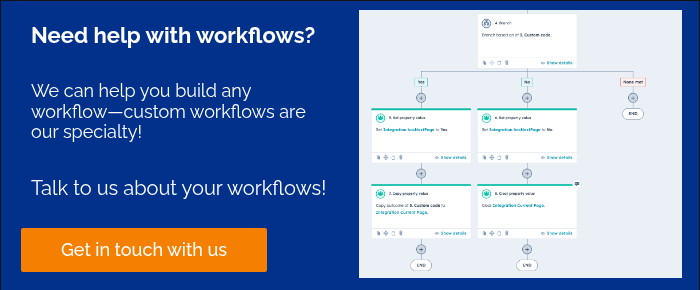For many companies using HubSpot, data challenges creep in quietly but grow into serious obstacles for your CRM and revenue operations. Duplicate records, inconsistent formatting, fragmented datasets, and incorrect information don’t just clutter your database — they undermine your ability to make informed decisions, deliver personalised customer experiences, align sales and marketing, and scale operations effectively.
Data in the CRM is critical to revenue operations—yet it remains one of the biggest pain points and hindrances to driving growth. Our in-house HubSpot CRM extraordinaire, Stacey Roberts, shares her insights into this very pertinent topic.

Q1: What are the most common reasons clients come to SpotDev feeling frustrated or disillusioned with their HubSpot portal or subscription?
A: A lack of knowledge when it comes to HubSpot features and tools. Without fully understanding the capabilities of the platform, users can get frustrated believing they are not able to perform certain tasks, need additional software or that HubSpot is just a customer database.
1.1. Messy data and automations
While no one system is ever 100% perfect when it comes to data, having inaccurate, out-of-date, incomplete or duplicated data in any system is sure to lead to user frustration, team misalignment and poor adoption.
1.2. Lack of oversight of HubSpot data
Simply having data in a system doesn’t fulfil the needs of most teams or businesses. In order to achieve your goals, you need to understand where you currently are – to do that you need to implement reporting within that system. That may be simple, top-level reporting or it may be more in-depth and comprehensive.
1.3. Excessive manual work
Many teams have been working in a particular way for a long time. When they move to HubSpot, they now have a host of places to navigate, properties to update, tasks to action and notifications to monitor. Utilising the host of automation tools available within HubSpot, manual work can be significantly reduced – for all teams involved. Workflows can update properties, send notifications and automatically update customers on progress while users can automate sales outreach with sequences.
Q2: What common mistakes do companies make when importing or structuring their data in HubSpot?
A 2.1.) Not following data formatting and hygiene best practice
HubSpot makes data formatting and hygiene easier with built-in data formatting and entry rules. You can use workflows to automate fixes—like turning “john” into “John”. You can also require unique values and set formatting rules for phone numbers and postal codes, for example. Messy data leads to inaccurate reporting as well as confusion, frustration and delays for both HubSpot users and customers. If there are external systems integrated with HubSpot, these issues can expand right the way across the business.
Figure 1: Workflows are an excellent tool to help you format your data correctly

2.2) Not enforcing data requirement rules
Constantly monitoring and rectifying missing data issues is time- and energy-intensive. HubSpot provides a selection of tools which reduce this manual workload. Setting required data as mandatory at record creation or at the different stages of deal and ticket pipelines can ensure the correct information is recorded and available to the relevant teams.
2.2.1 Conditional logic on properties can make it easy for teams to input required data while keeping record views clean and tidy. Conditional logic on properties in HubSpot means that some fields only appear based on the values selected in other fields. This helps teams focus on the right inputs without cluttering the screen with unnecessary fields. Let’s say your team is entering details about a new deal:
2.2.2 Workflows can also be utilised by enrolling records which do not meet the required criteria (e.g. no associated contact) and setting tasks for the record owners to update as needed. Reporting dashboards can also allow teams to easily identify records which need attention.
2.3. Assuming a custom property/object is always needed
Many customers define a new process, or integration, and assume they need a whole new set of properties and objects to make it work when, quite often, there are existing objects, properties and association labels that will do the job just fine.
2.3.1). Existing Objects
Definition:
Predefined types of records in HubSpot that represent core parts of your business.
Examples: Contacts (people); Companies (organisations); Deals (sales opportunities); Tickets (support requests)
Figure 2: Examples of objects in HubSpot - contacts, companies, deals & tickets

2.3.2). Properties
Definition:
Fields that hold information within an object.
Examples (for a Contact): First Name; Email Address; Job Title
HubSpot provides a host of default properties, based on their knowledge of how their customers across many industries, use the platform. While these properties are quite generic, most can be personalised according to your business and solve multiple problems at the same time. For example, Industry is a default single-line text property, but this property could be changed to a dropdown or multi-select property should a business work with a specific list of industries. This would also standardise the inputs, making reporting much easier.
2.3.3). Association Labels
Definition:
Custom tags used to describe the type of relationship between two associated records.
Examples (for a Contact): A contact is associated with a deal as a "Billing Contact" and/or a company is associated with a ticket as a “Decision Maker”
Rather than having several different yes/no properties for the relationship a record has with another, association labels can be used and required. This allows users to easily identify the relationship between records at a glance, without having to search for multiple properties. For example, association labels for contacts which show their relationship to a deal record as “billing contact” or “decision maker” are shown on the contact association card on the deal.
2.4 Having multiple sources for the same data with no hierarchy in place causing conflict/duplication
While it is exciting to integrate external systems to HubSpot and create that link across teams/processes, clients can sometimes jump into an integration without properly mapping out the data and clearly defining the hierarchical rules that need to be implemented.
When there is the possibility that the same data may be present in multiple systems, it’s important to ensure rules are set in place as to which source of data is the truth. For example, when an in-house app with customer login/account data is synced to HubSpot, it’s important to ask, should the in-house app always overwrite the data in HubSpot for certain properties.
Q3: What proactive steps can businesses take to avoid data issues in HubSpot from the start?
A: 3.1 Following data formatting and hygiene best practice
Proper data formatting is a critical step in ensuring that data is efficient, accurate, and aligned with your business needs and:
- Minimises the risk of data inconsistencies or errors.
- Ensures that all critical data fields are properly mapped and accessible in the HubSpot.
- Reduces delays caused by incomplete or improperly formatted data.
- Facilitates a smooth transition for the team to the new platform.
3.2 Proper data formatting and hygiene best practices include:
- Removing/merging duplicate data – be that whole records, or duplicated properties.
- Ensuring consistent data types e.g. date following consistent format (DD-MM-YYYY).
- Removing leading or trailing spaces in any data fields.
- Ensuring each record has a unique identifier (e.g. email for contacts).
%20(1).jpg?width=3500&height=1889&name=data-online-technology-internet-circuit-board-concept%20(1)%20(1).jpg)
3.3 Regularly auditing existing properties:
- Check for duplicate properties and merge/remove where possible
- Check for unused properties – if not needed, remove them; if they are needed investigate why they are not being used – perhaps a team training exercise on how to use them is needed
3.4 Regularly auditing workflows:
- The HubSpot workflows tool includes two very useful default saved views – “Needs Review” and “Unused”
- Regularly reviewing any workflows in the “Needs Review” view facilitates the speedy identification and rectification of any errors.
- “Unused” workflows are those which have had no actions in the past 90 days. This may be by design (e.g. on a workflow built to send automated emails during a certain monthly period such as Christmas break) or it may be that the workflow was set up for a job that has not been repeated or a process that is no longer applicable to the business. Monitoring these workflows and removing those that are no longer needed reduces the risk of confusion on the part of users and incorrect actions/data updates by out-of-date workflows.
Q4: Are there any proven strategies you've seen work well for businesses to onboard into HubSpot more smoothly, especially regarding data migration and structure?
A 4.1: Data requirements
Before migrating/integrating any data, it’s important to determine what data is actually needed, and how it will be used. Moving unused data from one system to another just leads to digital clutter and noise. Ensuring how the data will be used is mapped out prior to any migration/integration allows you to understand any issues that may arise such as duplication or conflicting data. Once you have identified the data that is required at each stage of the customer’s journey, be sure to make properties required by making use of HubSpot’s conditional stage properties.
4.2 CRM adoption
Many times, it can come as a surprise to users when they are told the company is implementing a new system. Ensuring they understand the reasons why this move is happening and outlining the benefits the new system will bring to them can increase the chance of users adopting HubSpot from the beginning. After all, who doesn’t love saving time and reducing manual tasks!
4.3 Training
Ensuring users receive full training, tailored to their role, will increase their confidence when starting out on HubSpot for the first time. Making sure users have access to ongoing training will help them identify and understand new tools and features that are released, keeping them up to date with the platform’s capabilities.

Q5: Can you share examples of data-related HubSpot issues SpotDev has solved for clients, and how the team’s expertise made a difference?
Based on a SpotDev case study:
A 5.1: Ineffective reporting
The reporting that the company had in place wasn't not aligned with that used by the finance team leading to confusion around revenue and team productivity. Due to a lack of knowledge surrounding HubSpot’s reporting tools, the team had been unable to create sufficient reporting to align with the reports generated by their finance team.
Having completed a couple of scoping sessions with the client to understand the information they needed to know and the data that needed to be included, SpotDev built new reporting dashboards.
Figure 3: Example of a sales report in HubSpot

With the reports now aligned with those the finance team, it allowed the organisation's management team to easily identify any data inconsistencies and rectify them as quickly as possible. SpotDev also provided the team with in-depth training on HubSpot’s reporting tools, giving them the knowledge and skills to create and update reports as needed in the future.
5.2) Personalisation tokens not rendering in marketing emails
The team have a number of automated marketing emails that are sent at various stages of the ticket lifecycle to keep customers up to date on the progress of their project. These emails include personalisation tokens to customise the emails to each customer by showing their project name, the consultant's name leading the project, among others.
The project name personalisation token was not rendering in these emails which caused confusion for some customers who had multiple projects running at the same time. After reviewing the personalisation tokens used, SpotDev noticed that there were multiple objects being referenced within the emails which is not recommended.
Following the team’s internal processes, SpotDev determined that the project name is available in both the Deal and Ticket records, meaning we were able to reduce the number of objects referenced in the emails. After switching out the personalisation token, the proceeding emails rendered correctly, leaving the customer with no doubt about which project the email was referring.
Figure 4: Personalisation in HubSpot email marketing

5.3) Repeated workflow errors for bounced/unsubscribed contacts
SpotDev conducted a SpotCheck® of the team’s portal and uncovered a number of workflows with errors. Further investigation revealed that contacts were being enrolled in workflows which sent out marketing emails but were causing errors due to incorrect email addresses or having unsubscribed.
SpotDev recommended adding unenrolment criteria to each workflow to remove contacts with a known 'hard bounce reason', or if they’d unsubscribed from marketing emails.
We also recommended creating a workflow to automatically set these contacts as non-marketing contacts to ensure the team didn’t exceed their marketing contact tier. An active list of these contacts was also recommended so that the team could review and remove contacts that are no longer viable.
After SpotDev implemented the above recommendations, the client saw a noticeable reduction in the number of errors generated by these workflows as well as an improved open rate of their emails. The client was also grateful for the proactive recommendations supporting them in staying within their marketing contact tier.
5.4) Important data missing when a ticket created from won deal
A part of their sales-service handover process, the team have a workflow which creates a ticket in their service pipeline for all deals moved to closed won. The team had realised that there was often a lot of data required by the service team which was missing when the tickets were created. SpotDev added conditional stage properties which stopped deals from being moved to closed won without the required information being input buy the user.
Conclusion
HubSpot offers a suite of tools to streamline your data and CRM—so your revenue operations run smoother and more efficiently. Reach out today to discover how we can clean, organise, and customise your CRM for maximum efficiency and growth.








%20(1).jpg?width=3500&height=1889&name=data-online-technology-internet-circuit-board-concept%20(1)%20(1).jpg)




